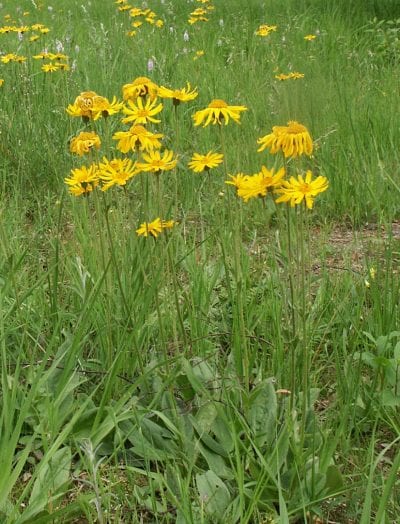
La arnica It is a very interesting medicinal plant, which can help us to have a healthier skin. However, its beauty can also be enjoyed in a garden or on a patio, as its maintenance is not difficult.
If you want to know what their care is, then I'll tell you about it 🙂.
Origin and characteristics

Our protagonist is a perennial herbaceous plant whose scientific name is Arnica montana. It is native to central and southern Europe, but is also found in Asia and North America. Reaches a height of 20 to 60cm, with simple erect stems slightly branched. The basal leaves form a rosette, and the rest are opposite, oval-lanceolate, whole or with obtuse and glabrous teeth.
The bracts are lanceolate and acute. The flowers are yellow, with a daisy-like appearance. The fruit is a 4mm achene, narrow, dark brown in color.
What are their cares?
If you want to have a copy, we recommend that you provide it with the following care:
- Location: outside, in full sun.
- Earth:
- Pot: substrate for acid plants.
- Garden: acidic, with good drainage.
- Irrigation: every 2 days in summer, and every 4-5 days the rest of the year. Use rainwater, lime-free or acidified (diluting the liquid of half a lemon in 1l of water).
- Subscriber: With ecological fertilizers from spring to late summer / early fall. In case it is in a pot, use liquid fertilizers so that the drainage continues to be good.
- Multiplication: by seeds in spring. Direct sowing in the seedbed, in full sun. They will germinate in 1-2 weeks.
- Planting or transplanting time: in spring.
- Pruning: dry leaves and withered flowers must be removed.
- Rusticity: withstands cold and frosts down to -5ºC.
What are its properties?

Arnica It is used as a medicinal product due to its properties for the skin, as it softens, hydrates and comforts it. In addition, it stimulates regeneration in local inflammations due to contusion or rheumatism, and is also effective for the elimination of internal effusions.
Of course, it is important to note that it is toxic at high doses, so it should be used only externally or for medical indications. The recommended dose is as follows: in the form of mother tincture 10% w / v, 50º at a rate of 5 to 10 drops 2 times a day.
What did you think of arnica?